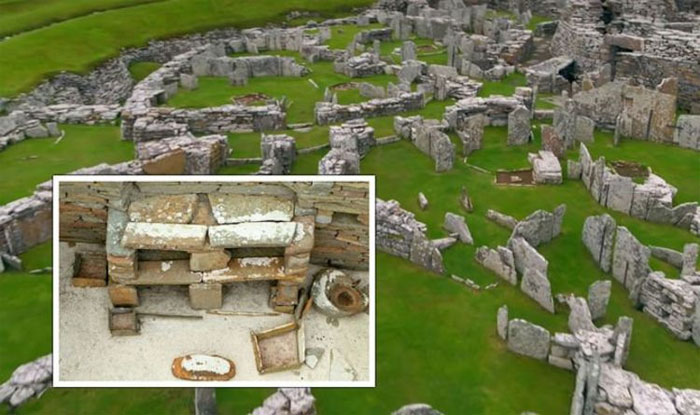Archaeologists are amazed at the 5,000-year-old 'Scottish Pompeii' ruins
Researchers have been stunned by a 5,000-year-old ancient settlement on the Orkney Islands, described as "Scottish Pompeii (Scottish Pompeii)".
Duncansby Head Lighthouse marks the northernmost point of mainland England, about 1,400km southwest of Land's End. Just beyond is the Orkney Islands , where ancient secrets are hidden.

Scientists were shocked and called this place "Scottish Pompeii". (Photo: Youtube/Smithsonian Channel)
Twenty of these islands were once inhabited, with a population of about 22,000, concentrated on the largest island known as the Mainland .
It is estimated that Orkney's history stretches back about 6,000 years, from the Neolithic period. The remains of the culture are still scattered across the archipelago and were explored in the Smithsonian Channel documentary , "Aerial Britain: Scotland". The documentary's narrator notes: "This is a 5,000-year-old settlement called Scottish Pompeii."
The life of the ancient people here was only discovered in 1850. In this village, each house shares the same basic design - a single large room equipped with a freezer and wardrobe. and beds, all arranged around a square fireplace. Here the inhabitants would gather around the bonfire during Orkney's long, dark winters.
The Broch of Gurness , also on the Mainland, is another settlement dating back to around 500 BC. In the center of the village is a brooch, or stone tower. This is most likely inhabited by the main families or clans in the area. "This whole area could have been inhabited by about 40 families," the narrator said .
Residential areas are scattered across the entire Orkney Islands. With excavations underway at many sites, the narrator notes: "Secrets are being unearthed and history is slowly being rewritten" .
- The incredible truth about couples hugging each other under the ashes 2,000 years ago
- The diet of 'sea breeze' of ancient Romans
- Explain the mystery of the ancient tombs in Pompeii
- Tragedy after the mass grave in British university
- 10 world famous ancient ruins
- Recreate Pompeii historical disaster
- Discovering a thousand-year-old wall in China
- Why are Roman tombs buried with
- The source of Pompeii style artefacts
- Discover the world's oldest whiskey stove in Scotland
- Discover the remains of an ancient city on the outskirts of Vienne
- Discover the oldest 1200-year-old phone in the world
 Discovered an ancient centipede fossil 99 million years old
Discovered an ancient centipede fossil 99 million years old Discovered bat-like dinosaurs in China
Discovered bat-like dinosaurs in China Discovered a 200-year-old bronze cannon of the coast
Discovered a 200-year-old bronze cannon of the coast Discover 305 million-year-old spider fossils
Discover 305 million-year-old spider fossils Surprised by the 'unique' discovery of the ancient Egyptian civilization
Surprised by the 'unique' discovery of the ancient Egyptian civilization  US company successfully tested a rocket-free spaceship launch system
US company successfully tested a rocket-free spaceship launch system  Discovery that goes down in history: The surface of the Moon has enough oxygen for 8 billion people to live for 100,000 years
Discovery that goes down in history: The surface of the Moon has enough oxygen for 8 billion people to live for 100,000 years  How does a 0.5 degree Celsius difference affect the global future?
How does a 0.5 degree Celsius difference affect the global future?  Proposal to build a space telescope $ 11 billion
Proposal to build a space telescope $ 11 billion  Warning of a disease outbreak that could kill 70 million people in Africa
Warning of a disease outbreak that could kill 70 million people in Africa 